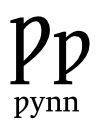Ynglisc
'Ynglisc' [ˈɪŋɡlɪʃ] is the English of Lucus.
Lucal Ynglisc differs from Terran English chiefly because the Normans never occupied all of England, and it was a Northern dialect, much less influenced by French which eventually came to be the basis for Mean Ynglisc (corresponding to Terran Standard English), which Thomas Scieridan defined as "A Norron reerd in a Suþron mowþ" ('A Northern language in a Southern mouth'), since after the Ynglisc kingdom drove out the Normans in the 15th century and its court and government moved from Geork to Lunden they brought with them a somewhat standardized written language based on Northern tradition and speech which now came to be pronounced by southerners according to their speech habits.
Spelling
Northern Lucal Ynglisc spelling was not 'reformed' under French influence during the 12th century as Terran English was, but continued as a native development of Old Ynglisc spelling.
In Northern Old Ynglisc the spellings ea eo io/ie had stood both for the diphthongs /æə eə iə æːə eːə iːə/ and for the monophthongs /æ(ː) ɑ(ː) o(ː) u(ː) e(ː)/ when these followed one of the consonant graphies c g cg sc standing for /ʧ j ʤ ʃ/, or rather the spellings ce ge cge sce stood for these palatal sounds before the letter a standing for /æ/ or /ɑ/ and o standing for /o/, and ci gi cgi sci stod for the same sounds before the letter o standing for /u/ and e standing for /e/. In addition the digraph iu was in use as an alternative to gio for /ju/. Trigraphs were not permitted in the spelling system, so e.g. cea was used for both /ʧɑ/ and /ʧæ/ rather than spelling the latter as ceæ or ciæ.
At the end of the Old Ynglisc period the diphthongs were monophthongized by losing their [ə] element. Short /æ/ and /ɑ/ merged as /a/, and /y(ː)/ merged with /i(ː)/. In early Middle Ynglisc the above-mentioned vowel digraphs came to make sense, and only be used, to mark preceding c g cg sc as palatal, except for ea which continued to be used as a spelling for /æː/. Conversely y æ came to be used for /i e/ when these followed a non-platalized c g cg sc, which was now more common than before due to the merger of unstressed vowels as [ə], which was perceived as belonging to the /e/ phoneme, and Old Norse loanwords with velar consonants before front vowels. The spelling of /e/ was thus highly redundant, as special spellings were used for it both when a preceding c g cg sc was palatalized and when it was non-palatalized. In addition æ was used as an alternative spelling for /æː/!
In time a need was felt to mark also whether a following c g cg sc was palatalized or not, and the analogical spellings ai ei oe oi arose for this purpose, partly inspired by occasional spellings like dai dæi for traditional dæg, now pronounced /dei/. In addition the spelling io came to be used for /i/ in words like cionc 'chink' where it was preceded by a palatal and followed by a velar. This made spellings like cioc potentially ambiguous between /ʧuk/ and /ʧik/. As can be seen the vowel digraphs were used to indicate palatal pronunciation also in syllable final clusters like nc ng lc lg rc rg.
Somewhat later new vowel digraphs aa ee ij oo w came into use for long vowels, and the traditional sequences aƿ eƿ iƿ oƿ came in practice to be seen and used as vowel spellings, in free variation with au eu iu ou. In time ƿ (wynn) came to be felt as too similar to p þ and was replaced by w in all its uses.
Little by little vowel trigraphs like iea eau ieo æi came to be eccepted, though spellings like iee containing a doubled vowel-letter coupled with another vowel letter was still frowned upon. It should be noted that iw, replacing iƿ, was largely ousted by iow, probably because sequences of many vertical lines were perceived as ugly and ambiguous in the medieval hand, and it was probably for the same reason that iu ui never caught on as a means of disambiguating io oi (quite apart from the fact that y was by tradition perceived as a ligature for ui).
It should be noted that unlike Irish spelling Ynglisc spelling never demanded that soft consonants should be flanked by soft vowels on both sides; the rules for soft and hard spellings only applied within the syllable. In addition unstressed e was treated as hard or disregarded, so that /sɪŋgən/ was written syngen/siongen and /sɪnʤən/ was written singen/singien.
